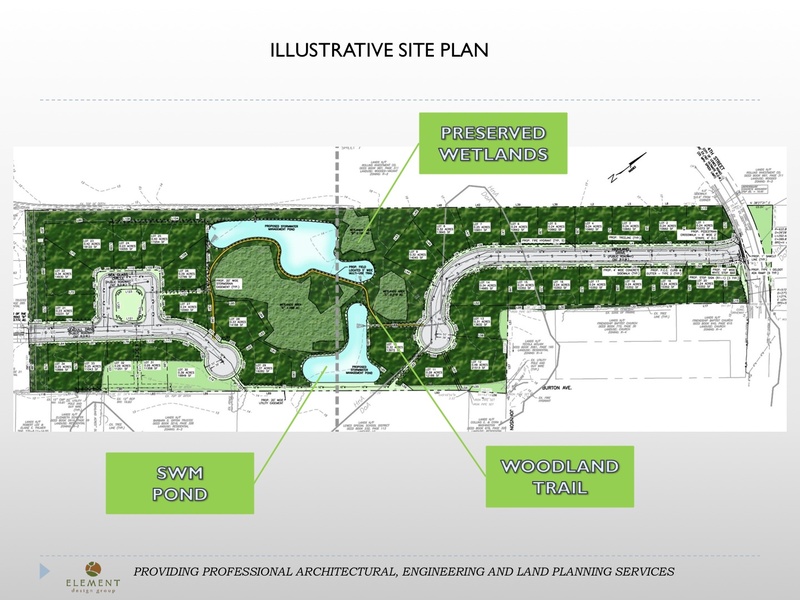The Lewes Planning Commission granted preliminary consent for the 34-lot Highland Heights major subdivision proposed for an 18.34-acre wooded area between Seagull Drive and West Fourth Street.
Members voted 6-0 Sept. 9 to allow developer Jack Lingo Asset Management to move forward, but attached 12 conditions pertaining to concerns about a faulty tax ditch, wetlands protection and connectivity to current and future sections of Lewes.
“I think the planning commission has done an excellent job in highlighting some of the more important issues and placing some very strong markers in the preliminary approval resolution for things that we want to see handled as part of this process,” said Chairman Mike Mahaffie.
Nick Hammonds, a principal with Jack Lingo Asset Management, said he was happy to see the development earn approval, but he was not pleased with some of the conditions. As part of the approval, commissioners required paper stub streets for future connections to an undeveloped parcel to the north known as the Rollins property. To fulfill that requirement, Hammonds said, the plan may have to be altered and lots may be lost.
Another condition asks the developer to research and strongly consider connecting the project's two cul-de-sacs. As currently designed, two stormwater ponds separate the two and only a bike and pedestrian path connects the two sections.
“We feel like we've already done that,” Hammonds said.
In its research, he said, it found wetlands on the property that should not be disturbed. Because of that, a connector road may not be feasible, he said.
Commissioner Jim Linnen said cul-de-sac communities are discouraged in city code. For that reason, he said, he would prefer to see a causeway connect the development's two sides.
“I would be very disappointed if we build another development [with a cul-de-sac design] if there is a way to avoid doing that,” he said.
The risk to wetlands was more important to some commissioners, so a connector road is not required in final plans. The developer is asked to strongly consider including a through street in its final design.
“In a perfect world it should be connected; it should be part of the grid,” said Commissioner Barbara Vaughan. “But the protection of the wetlands, I think, trumps that desire.”
Commission Vice Chair Kay Carnahan agreed.
“I'm definitely not a fan of the cul-de-sac design,” she said. “It doesn't seem like a unified community. That being said, I think wetlands trump cul-de-sac.”
The property's wetlands were so important to the commission, it included wetland protection in several of the conditions, including a provision to stress the importance of wetlands in the development's covenants.
The idea of connectivity has been a major topic throughout the process, specifically to neighboring Highland Acres, which could offer access to the eastern part of Lewes. While the commission did not require a road connection to Highland Acres, it did require the developer to identify design elements that could be utilized to improve bicycle and pedestrian accessibility to Highland Acres.
Listed as the commission's most important condition was a resolution to a decades-long problem with the area's tax ditch. Tax ditch manager Joe Stormer, a Seagull Drive resident, says a culvert pipe was improperly installed above the water level in the late 1990s. To fix the problem, a 6-inch drainage pipe was added, but build up and damaged sections of the culvert have rendered a 650-foot section of the tax ditch useless. Estimates to fix the drainage problem have varied from $150,000 to $600,000 Carnahan said.
Fixing the problem is vital to allowing future construction in the tax ditch area, Carnahan said.
“This development hinges on a working tax ditch,” she said. “My feeling that it shouldn't progress until the tax ditch works. There's no point in moving forward or spending money until the tax ditch is functioning.”
As a condition, the commission required the developer to work with the Department of Natural Resources and Environmental Control, Sussex Conservation District, Lewes Board of Public Works, Stormer and other concerned tax ditch members to find a solution to the problem. Unless it shows progress in fixing the ditch, the developer will not receive final approval.
As with all projects, Hammonds said, his company tries to gain final approval as quickly as possible. The next step requires further engineering of the project, which typically takes four to five months. However, the many conditions attached to preliminary consent could slow the timeline, he said.
“Given the uncertainties, I'm not sure that's possible,” Hammonds said.

















































